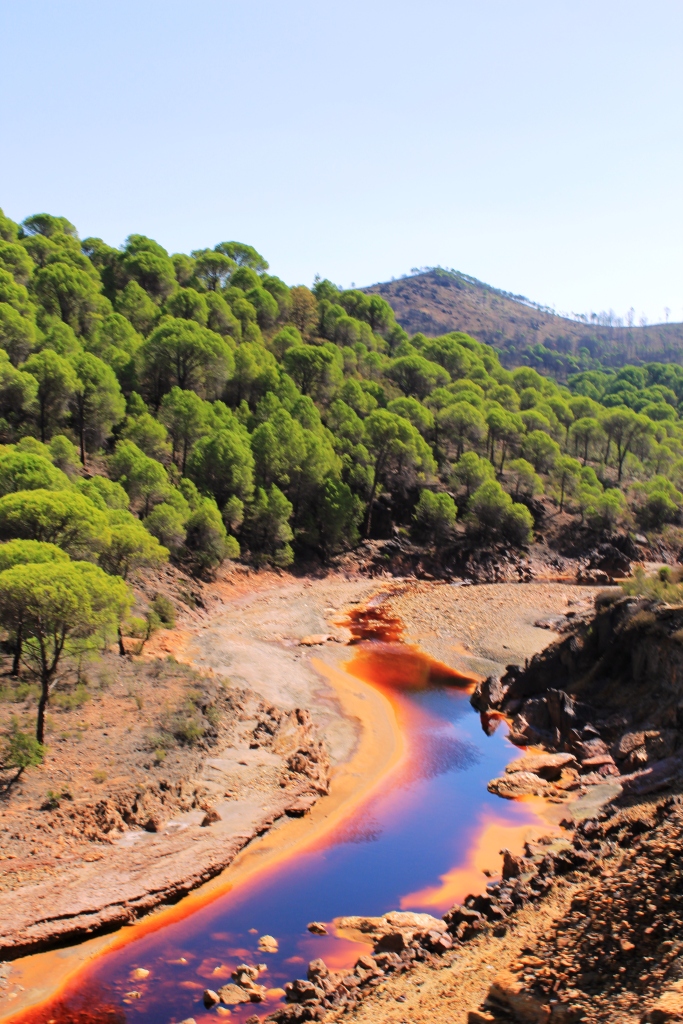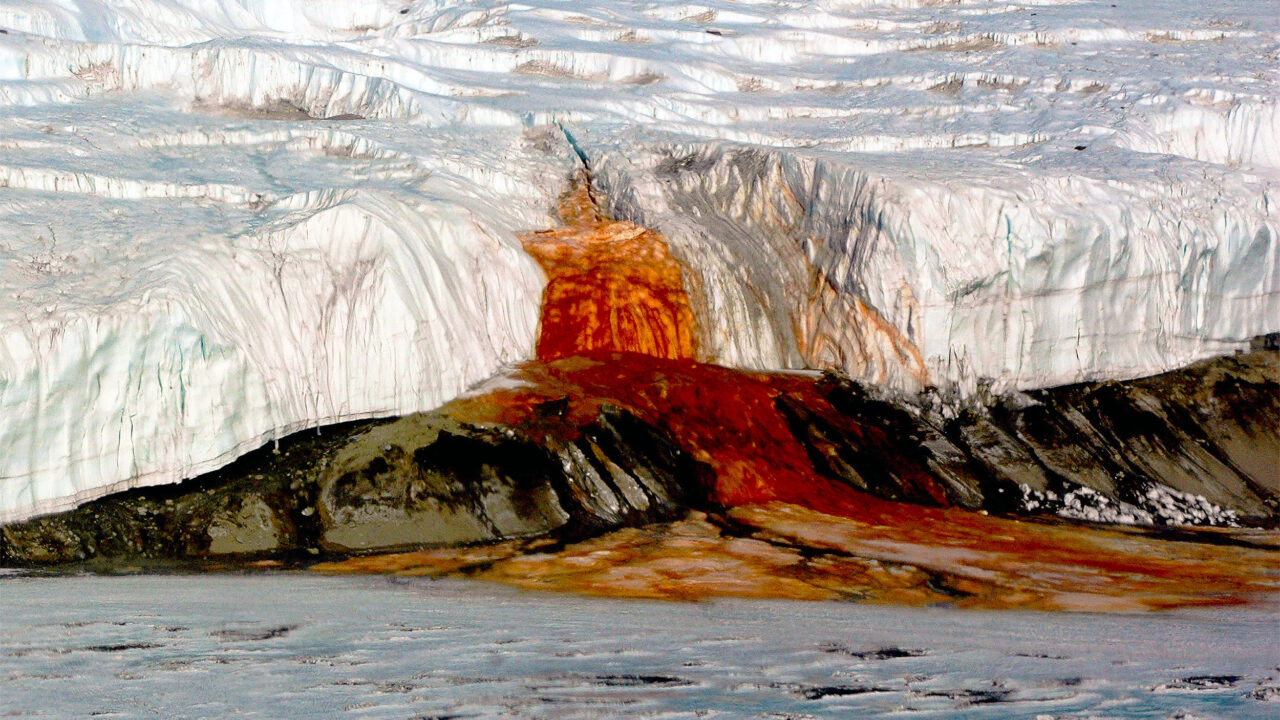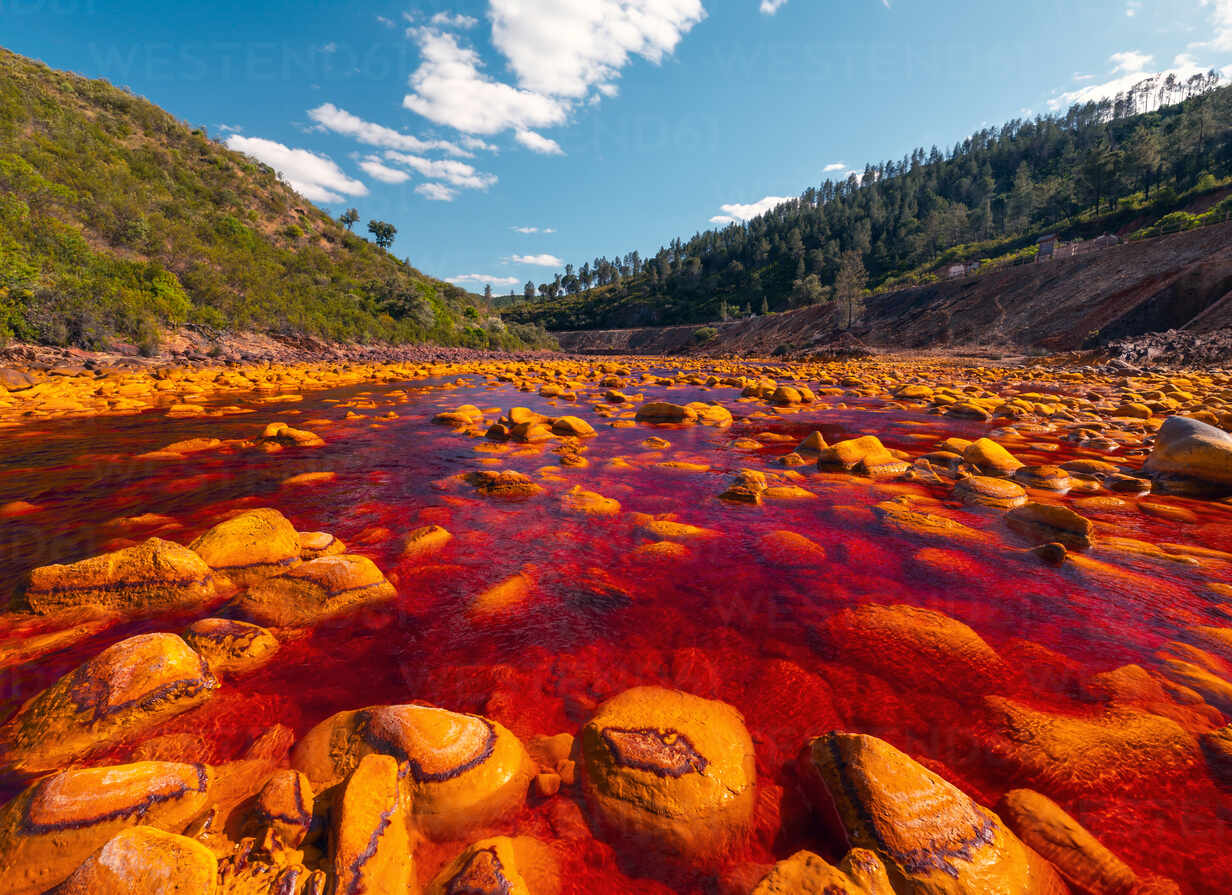Río Tinto, the blood-red river snaking through southwestern Spain, looks like it’s from another planet and for good reason. Its acidic waters and iron-rich hue have inspired NASA scientists studying Mars. In this ultimate guide, dive into the geology of Río Tinto, its fascinating history of ancient mining, unique ecosystem, and top activities for visitors. Whether you’re a geology geek, eco-adventurer, or space enthusiast, here’s why the Río Tinto river in Huelva Province is a must-see in 2025.
The Geology and Formation of Río Tinto
The Río Tinto geology is a textbook case of extreme Earth environments. Stretching 100 km (62 miles) from the Sierra Morena mountains to the Atlantic Ocean near Huelva, this river’s signature crimson color comes from dissolved heavy metals like iron, copper, and sulfur. Its pH hovers at a stomach-churning 2.0-2.5 – more acidic than vinegar – thanks to pyrite (fool’s gold) oxidation from millennia of mining.
Formed over 5 million years ago during the Miocene epoch, Río Tinto drains the Iberian Pyrite Belt, one of Europe’s richest mineral deposits. Glacial and tectonic forces sculpted its path, while microbial activity today keeps the waters “brewing” like a natural chem lab. No wonder it’s a Mars analog: NASA’s Astrobiology Institute uses it to test rovers for extraterrestrial life.
| Key Geological Features | Details |
|---|---|
| Length | 100 km (62 miles) |
| Source | Sierra Morena Mountains |
| Mouth | Atlantic Ocean (near Huelva) |
| pH Level | 2.0-2.5 (highly acidic) |
| Dominant Minerals | Iron oxide (hematite), copper, sulfur |
| Basin Area | ~1,500 km² |
| Water Color | Blood-red from ferric iron precipitation |
This volatile chemistry creates ochre terraces and rust-colored pools, turning the landscape into a surreal, post-apocalyptic canvas.

A Brief History of Río Tinto
The history of Río Tinto reads like a mining epic. Evidence of copper extraction dates back to 3,000 BCE, with Tartessian and Phoenician traders mining its riches. The Romans ramped it up in 206 BCE, building aqueducts and smelters that produced 1,000 tons of silver annually funding empires from aqueducts in Rome to coins in Jerusalem.
ALSO SEE : Maned Wolf: The Elegant and Mysterious Wolf of South America
Fast-forward to the 1870s: British investors formed the Rio Tinto Company Limited, kickstarting modern open-pit mining that scarred the land but birthed the town of Riotinto. Operations peaked in the early 20th century, extracting millions of tons of ore. Today, Atalaya Mining continues smaller-scale extraction, but the site’s heritage shines through the Río Tinto Mining Museum. Conservation efforts since the 1990s have shifted focus to eco-tourism, preserving this industrial relic as a UNESCO Geopark contender.
Fun fact: The river’s name, “Río Tinto,” translates to “stained river” in Spanish a nod to its eternal blush.
The Unique Ecosystem of Río Tinto: Life in Acid
Despite its toxicity, the Río Tinto ecosystem teems with extremophiles microbes that thrive in hellish conditions. Iron-oxidizing bacteria like Acidithiobacillus ferrooxidans “breathe” the acidic soup, tinting the water red and producing biominerals. This biodiversity hotspot hosts fungi, algae, and even small invertebrates, offering clues to life on early Earth or Mars.
Ecological studies here reveal how these organisms bioleach metals, inspiring biotech for sustainable mining. Conservation by the Río Tinto Foundation monitors pollution, ensuring the river’s “alien” life persists. Visitors can join guided bio-tours to peer at microscopic worlds through microscopes a blend of science and wonder.
Top Activities on the Río Tinto River: Mining Tours, Hiking, and Stargazing
The Río Tinto activities cater to curious explorers. No swimming (thanks to the acidity!), but plenty of ways to engage safely.
Guided Mining Tours and Boat Trips
Hop on a Río Tinto boat tour from the Peña de Hierro dam for close-up views of rust waterfalls and abandoned mines. The Mining Park’s train ride (El Tren de Riotinto) chugs through historic pits – $20 USD for a 2-hour journey. Pro tip: Book via the official visitor center for English guides.
Hiking and Biking Trails
Tackle the Río Tinto hiking trails like the 5 km Sendero del Río route, winding past ochre pits and Roman ruins. Mountain biking options offer adrenaline with panoramic vistas. Best in spring (March-May) when wildflowers contrast the red earth.
Other Adventures
- Stargazing: Low light pollution makes it an astronomy haven – join night tours spotting Orion over the crimson flow.
- Geology Workshops: Hands-on classes at the Corta Atalaya viewpoint teach rock sampling.
- Cultural Immersion: Visit nearby Huelva for Iberian festivals tied to the river’s lore.
Safety note: Stick to marked paths; the terrain is rugged, and water contact can irritate skin.
Best Time to Visit Río Tinto and Travel Tips
For Río Tinto travel, aim for spring (April-June) or fall (September-October) when temps are mild (15-25°C/59-77°F) and colors pop without summer heat (up to 40°C/104°F). Winter brings floods that intensify the red, but roads get slick.
How to Get to Río Tinto:
- Fly into Seville Airport (SVQ), then drive 1.5 hours southwest via A-49 (~$50 USD rental).
- Train from Seville to Huelva (1 hour, $15 USD), followed by a 45-minute bus/taxi.
- Stay in Riotinto or Nerva eco-hotels like Hotel Las Menas ($80/night with mine views).
Budget: $100-150 USD/day covering tours, meals (try local jamón ibérico), and entry fees. Pack sturdy shoes, sun protection, and a wide-angle camera for those Mars-like shots.
Conservation Efforts and Why Río Tinto Matters
Río Tinto conservation balances legacy with legacy. The European Commission’s LIFE projects remediate acid mine drainage, planting native species to stabilize banks. Community-led initiatives, like the Río Tinto Foundation, promote sustainable tourism that funds habitat restoration. As a model for post-mining rehab, it highlights how humans can heal scarred lands vital amid global climate challenges.
Visiting ethically? Support local guides and avoid off-trail wandering to protect fragile soils.
Conclusion: Why Río Tinto Should Be on Your Bucket List
Río Tinto is more than a river – it’s a living laboratory where Earth’s extremes mirror cosmic mysteries, blending history, science, and stark beauty. From Roman ghosts to bacterial survivors, it challenges what “habitable” means. In 2025, with enhanced eco-tours, it’s prime time to witness this red ribbon of wonder.
Got plans for Spain? Drop your Río Tinto experiences in the comments rafting the red or just the views?





